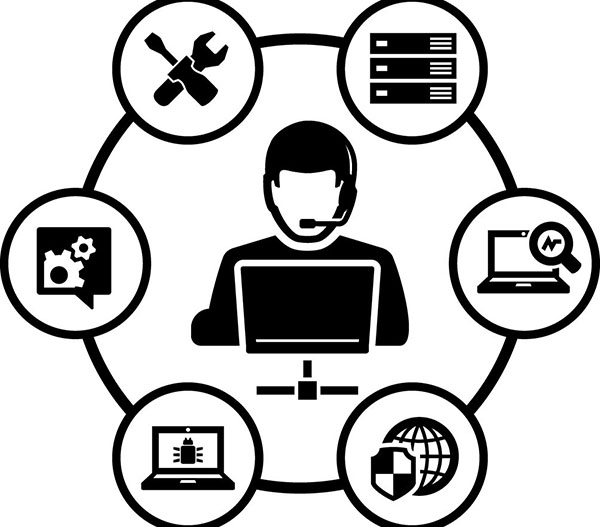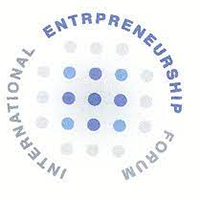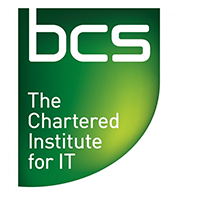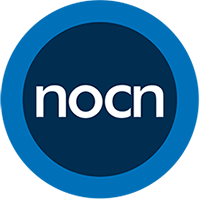The broad purpose of a Digital Support Technician is to maximise the effective use of digital office
technologies, productivity software, digital communications, including collaborative technologies, and
digital information systems to achieve objectives. They will select one of the following two options:
-
A Digital Applications Technician helps their organisation and its internal users to maximise the
use of digital technologies and adapt to and exploit changes in technology to meet organisation
objectives and maximise productivity ensure effective use of digital office technologies, productivity
software, digital communications, including collaborative technologies, and digital information
systems to achieve objectives
-
A Digital Service Technician supports the external customers and clients of their organisation
though a wide variety of digital channels, to help them access and receive services, to coach and
support them in their use of the digital systems; to support them to complete and submit
information remotely and to diagnose and resolve their problems in relation to their access to and
use of the digital technologies
In their daily work, Digital Support Technicians interact with a wide variety of internal or external
users of digital systems, through digital channels, by phone and/or face to face.
Digital Support Technicians have the following levels of responsibility
-
Autonomy: working under general direction, using discretion in identifying and responding to
complex issues and assignments, usually receiving clear instructions and having work reviewed at
frequent milestones, and determining when issues should be escalated to a higher level.
-
Influence: interacting with and influencing others, having working level contact with colleagues or
customers, and may supervise others or make decisions which impact the work assigned to others or
to other phases of projects.
-
Business: contributing fully to the work of teams, planning, scheduling and monitoring their own
work within limited deadlines and according to relevant legislation, standards and procedures.
All Digital Support Technicians have the following core duties
- Apply relevant digital technologies effectively to achieve objectives
- Monitor and operate complex digital information and intelligence systems
- Respond to user enquiries
- Maintain data, digital resources and data systems
- Communicate effectively though digital channels
- Learn through digital resources
- Work as a member of a team
- Maintain an awareness of current, emerging and fringe digital technologies
Digital Applications Technicians also
- Devise technology-based productivity solutions, and implement these in the organisation
- Work as digital champions - training and supporting colleagues to make the best use of technology-based productivity tools
- Diagnose digital problems and provide internal end-user application support
- Assist with digital operations and digital change projects
- Support digital transformation projects.
Digital Service Technicians also
- Help customers and clients register for and access information, products and services through online
and digital channels as part of a sales or customer service process
- Support and coach external users in their use of these digital technologies
- Diagnose and resolve external users’ digital problems with accessing and using the digital
technologies and advising on related hardware and software problems
- Utilise software packages and tools such as collaborative technologies, to interface effectively with
external end-users
- Use a variety of digital channels to maximise effective external user support and to resolve external
end-user problems
- Use and maintain information systems such as Customer Relationship Management tools to manage
service delivery, improve user experience and increase organisational productivity
Typical Job Roles
For Digital Applications Technicians: Digital Coach, Digital Transformation Associate; ICT Support
Analyst, Digital Champion, Database Administrator, Data Administrator, IT Operations Technician, Digital Applications Specialist and Digital Systems Operator.
For Digital Service Technicians: Service Centre Operator, Digital Service Advisor, Digital Service Support,
Digital Service Agent; Applications and On-line Service Executive, Technical Support Professional, Digital
Support Professional, and Operations Technical Specialist
Entry Requirements
Individual employers will set the selection criteria including relevant qualifications and experience. The
apprentice is likely to be required to demonstrate an aptitude for functional maths and competence in
written and spoken English.
Technical Skills
Core
- Digital technologies: uses a range of digital office technologies, including collaborative tools,
appropriately for internal and external communications, including, for example, office suites,
conferencing facilities and mass email tools; survey tools; social media tools for business; SMS; live
chat and video chat; web conferencing to support the delivery of services and to share information
with customers and colleagues
-
Data management: uses data systems effectively, appropriately and securely to meet business
requirements and in line with organisational procedures and legislation
-
Digital security: applies information security principles to information transfer, deletion, storage,
usage and communications – using mobile devices where appropriate
-
Digital services support: responds appropriately and effectively to internal or external enquiries;
providing support and information using utilising digital channels where appropriate and responding
according to organisation protocols
-
Digital Information Management Systems: operates a range of digital information systems and tools
to maintain information and to support service delivery, whether Client Management Systems (CMS),
Customer Relationship Management systems (CRM), finance or human systems or other bespoke
digital systems or databases. This includes searching, storing, integrating and organisating data; data
entry and maintainance; data modelling; relationship modelling and data analysis to identify trends
and insights
-
Communication: communicates effectively in writing, verbally and face to face appropriately through
different digital channels, including e-mail, telephone and collaborative technologies, including digital
specialists and others, using technical terminology and non-technical terminology as appropriate,
whether for internal or external communication
-
Digital learning: studies using digital resources to extend knowledge and skills in the use of new
digital systems or features and other skills
-
Organisational policies and standards: operates in line with organisational polices, standards,
legislation, professional ethics, privacy and confidentiality and knows where to source these and
when and how to escalate any issues
-
Thinking skills: thinks logically and creatively to resolve digital problems
-
Business and decision-making skills: demonstrates an understanding of the organisational impact of
decisions that they take
-
Continuous improvement: effectively uses complex management information systems to drive
productivity and performance of self and department, whilst proactively looking for ways to develop
digital systems and processes to drive efficiency
-
Teamwork: competently uses digital technologies to operate effectively as part of a team, and with
other stakeholders, enabling sharing of information and best practice
- Work environment: maintains a productive, professional and secure working environment
Option 1 – Digital Applications Technician
- Digital Technologies: applies sophisticated digital technologies effectively to achieve objectives
- Information Systems: monitors and operates complex information systems
- Digital Implementation: supports digital operations and/or digital change and transformation by
championing and demonstrating best practices
-
Digital problem solving: identifies and resolves digital problems independently for self and colleagues
to maintain productivity and improve quality of service
- Digital skills support: coaches and guides less experienced colleagues to develop their digital skills
and to use digital systems effectively
- Productivity software: uses a range of digital applications appropriate to the role to create, update,
edit, manage, analyse and present data and information
-
Working with colleagues: works with internal colleagues across the organisation – whether digital
specialists or otherwise
Option 2 – Digital Service Technician
- Customer service: helps customers and clients register for and access information, products and
services through online digital channels and represents the organisations brand through digital
channels
-
Digital problem solving: diagnoses and resolves customers and client’s problems with accessing and
using digital technologies and applies the organisation’s diagnostic processes for fault finding
escalating and reporting problems with the digital technologies, using content management systems
as appropriate
-
Maintain end-user systems physically or remotely. For example: software, hardware or operating
system
-
Multi-tasking: applies excellent multi-tasking capability to be able to capture information at a
conversational pace whilst navigating numerous systems
-
Customer service: takes responsibility for customer service and uses diagnostic tools and digital
systems to manage external end-user dissatisfaction through to resolution
-
Business skills: demonstrates first point resolution whilst balancing customer and business needs to
secure the appropriate solution
-
Working with customers: works with a very wide range of customers and external users – from a wide
variety of backgrounds, with a wide variety of needs and with a wide variety of digital competence,
including dealing with difficult and challenging situations
Technical Knowledge and Understanding
Core
Understands
- the most common digital office technologies, including collaborative tools, that are used by
organisations for internal and external communications and best working practices
-
modern digital infrastructure, incuding computer systems fundamentals including physical, virtual
and cloud; physical systems including hardware peripherals; operating software and software
devices; servers; the internet of things; networking fundamentals; virtualisation technologies and
cloud
- the importance of and the technologies for backing up data securely
-
how to apply the processes and procedures for the secure handling of data
-
the concepts and fundamentals of data, including searching, storing, integrating and organising data;
how organisations use various types of data; the key features and functions of information systems;
data formats and their importance for analysis; data entry and maintenance; visualisation and
presentation of data; data modelling; relationship modelling and data analysis to identify trends and
insights
-
the organisational importance of information security and its management including following
policies and procedures and key legislative requirements
- the major types of threats and risk that apply to any organisation with a working understanding of
those that apply to their role and the associated best practice for their own secure working
-
operational aspects of risk including maintaining steady state/business as usual security principals for
individuals and systems including personal data, access, identity management, encryption and
passwords
-
the individual and company risks, responsibilities and requirements in relation to legislation,
professional ethics, privacy and confidentiality and the implications for their role
-
the principles behind an organisation’s digital presence and delivery and the techniques required to
maintain this and how to represent and safeguard the brand and reputation in relation to the digital
offer
- how best to communicate using the different digital communication channels and how to adapt
appropriately to different audiences
- the limitations and extent of the internet to be able to connect to, research, locate and access
information securely
- how to plan and organise own learning activities to maintain and develop digital skills
- the importance of effective time management and the need to prioritise effectively
- the need for continuous improvement with the application and use of digital technologies and how
this benefits the organisation
- awareness of current, emerging and fringe digital technologies and the implications for work
Option 1 – Digital Applications Technician
Understands
- the most common productivity software applications used to create, update, edit, manage, analyse
and present data and information and best working practices
- the main features and benefits of digital information systems and how these are used to maintain
information and to support service delivery and best working practices
-
the basic working practices for productive use and maintenance of business hardware, software and
networks
-
agile methodologies and work practices, Continuous Innovation with Continuous Development (CIDC)
-
how organisations incorporate digital technologies into key business functions, such as finance, sales
and marketing, operations and HR and the implications for their role
- how to assist with digital operations and digital change projects
- how to train and support internal colleagues to make the best use of the organisation’s technology�based productivity tools.
- the features and key differences between different data storage systems including the Cloud and
databases
Option 2 – Digital Service Technician
Understands
- how to use databases, CRM packages, content management systems, office systems, web
technologies; e mail and mass e mail tools, SMS, live chat, video chat and messaging platforms;
survey tools; social media tools for business; and other collaborative tools, including web
conferencing
-
the importance of and the key principles and features of processes for diagnosing users’ digital
problems
-
end-user systems; operating systems; application types and deployment methods; support processes
such as password management, access control and connection to remote resources; version
management, including patching; mobile device management including segregation of provide and
business use; and software licenses and approved software
-
the processes and principles of content management systems to identify and resolve uses’ digital
problems
-
how best to communicate to different users though digital channels and how to adapt appropriate to
different audiences
- what is meant by a CRM system, how to use it for accessing and maintaining the customers’ digital
information and the contribution of CRM to an organisations performance and customer service
- sales and customer service support processes, and their role within it including in relation to digital
impact and possible damage to brand reputation
- how the organisation’s legal and ethical position fits with organisational needs and customer
expectations
- the key features and importance of escalation and reporting procedures when dealing with users’
digital problems
- how to coach and support a wide variety of external users to help them make the best use of digital
technologies to access information, services or products and conduct transactions
Core Behaviours
- Works independently and takes responsibility maintains productive and professional working
environment with secure working practices
- Uses own initiative when implementing digital technologies and when finding solutions
- Resilient and positive mental attitude when dealing with difficult situations
- Maintains thorough and organised approach to work when working with digital technologies and
prioritising as appropriate
Professional Recognition:
Those completing the Digital Support Technician apprenticeship will be recognised for entry onto the
BCS, the Chartered Institute for IT, Register of IT Technicians confirming SFIA level 3 professional
competence. Those completing the apprenticeship can apply for registration.
English and Maths:
Level 2 English and Maths will need to be achieved, if not already, prior to taking the end point
assessment. For those with an education, health and care plan or a legacy statement the
apprenticeship’s English and maths minimum requirement is Entry Level 3 and British Sign Language
qualification is an alternative to English qualifications for whom this is their primary language
Duration:
The duration of this apprenticeship is typically 15 months



















